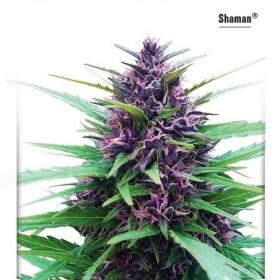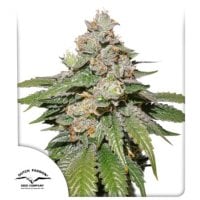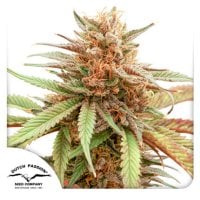
The dominating sativa genes come to the forefront with Shaman. It has the typical sativa look: long finger-like leaves with long internodes and large, fat buds. On the indica side, it has the compact shape of a Christmas tree.
There are at least two known phenotypes, one of which presents with leaves that grow a deep purple that borders on indigo as the plant reaches maturity.
The other maintains the classic deep green sativa coloration throughout the vegetative and flower periods. Both have been delighting growers and enthusiasts alike for the better part of three decades with little, if any, variation in quality.
The aroma of Shaman is also classically sativa with earthy, evergreen notes that also intensify as the plants mature. The endnote is distinctly floral and acidy, a result of its indica genetics.
The flavour is very smooth with a delightful mingling of woody, smoky and sweet.
THC content is moderate with Shaman - about 14% maximum. The effect it produces is typically sativa. It starts with an initial alluring, rising euphoria and plateaus with a very uplifting and functional high that lasts a good long time.
The effect is also very motivating and promotes productivity and creative release.
Growing Shaman is like any other sativa-dominant strain. The plants grow relatively tall making it a good strain for greenhouses, outdoor gardens and indoor grow rooms with high ceilings.
The lateral branches ensure that the entire plant gets an equal distribution of light and the compact structure makes it easy to grow a lot in a relatively small floor space. Indoor growers will want to provide a good balance of nutrients and a consistent light cycle.
Outdoor growers should plan harvest by the end of October or before first frost, depending on geographic location and typical weather patterns.
Please remember that the growing of cannabis plants and the cultivation of seeds is illegal in some countries - please check the laws of your country and don't be growing any plants if it is against your country's laws.



